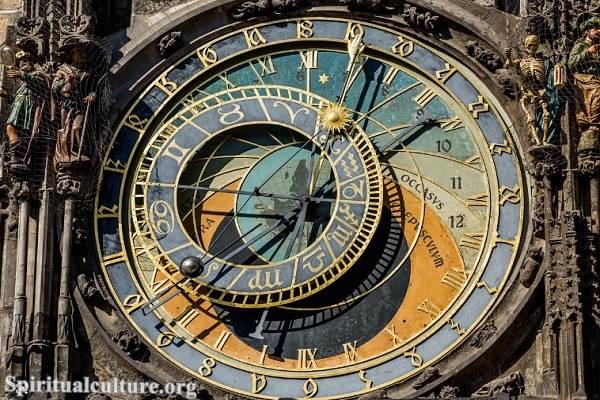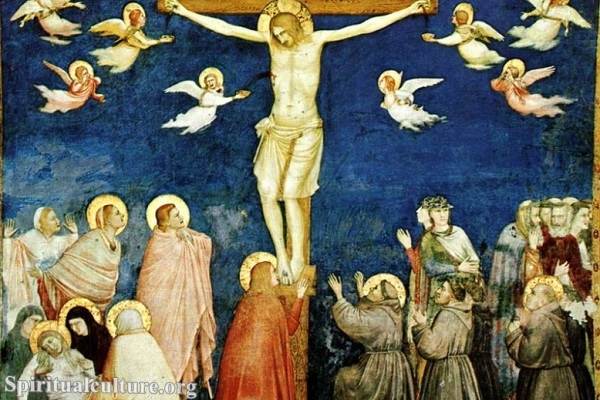The Gregorian calendar is the calendar system predominantly used today across the globe. This sophisticated timekeeping tool has become integral to modern society, shaping various facets of life, including economics, agriculture, and cultural practices.

In this article, Spiritual Culture will explore the nuanced history of the Gregorian calendar, its key features, significant differences from the Julian calendar, its leap year rules, its influence on contemporary society, changes in timekeeping brought about by its adoption, regional variations in its acceptance, major holidays observed within its framework, its impact on agriculture, and future prospects for this vital timekeeping system.
History of the Gregorian Calendar
The Creation and Motivation Behind the Reform
The Gregorian calendar was introduced by Pope Gregory XIII on October 15, 1582. Its inception was motivated primarily by the inaccuracies of the Julian calendar, established by Julius Caesar in 46 BC. The Julian calendar calculated the length of a year as 365 days with an extra day added every four years, resulting in an average year length of 365.25 days. However, this approximation overlooked several critical factors, leading to a gradual drift of the calendar against the seasons.
As centuries passed, the discrepancy began to compound. The Julian calendar, with its 365.25-day average, was too long by about 11 minutes per year. Over approximately 1,500 years, this seemingly minor flaw accumulated to about 10 days. By the late 16th century, the spring equinox, which was originally set around March 21, had drifted to March 11. This misalignment had severe consequences, particularly for the Christian calendar, which relied on equinoxes and solstices for the determination of important festivals, especially Easter.
Pope Gregory XIII aimed to rectify this issue. His, papal bull Inter gravissimas, outlined the necessary reforms to better align the calendar with the solar year. Key changes included the addition of leap years based on a more sophisticated calculation and the elimination of ten days to realign the date.
Implementation of the New Calendar
The implementation of the Gregorian calendar was not immediate or uniform. The initial adoption occurred in predominantly Catholic countries, starting with Italy, Spain, Portugal, and Poland. On the day following October 4, 1582, these nations saw October 15, 1582, take its place, thus skipping ten days.
Despite the compelling scientific rationale behind the Gregorian calendar, Protestant nations were reluctant to accept a system instituted by the papacy. In England, it wasn’t until September 2, 1752, that the calendar shift occurred; the day after that was September 14. This resistance was emblematic of the broader religious tensions of the time, with many viewing the Gregorian reform as an attempt by the Catholic Church to assert its influence over secular matters.
Significantly, the adoption of the Gregorian calendar did not only reflect a new method of numbering days; it symbolized political and cultural shifts in Europe, demonstrating the interplay between religion, science, and governance.
Global Acceptance Over Time
The transition to the Gregorian calendar was gradual globally. Countries such as Russia continued to use the Julian calendar until the early 20th century; it wasn’t until after the Bolshevik Revolution in 1918 that the Gregorian calendar was adopted. By then, the Julian calendar had drifted even further from the seasons, necessitating a change.
Many non-Christian countries, such as Japan, China, and Turkey, adopted the Gregorian system for administrative purposes in the 19th and 20th centuries, even as they retained their traditional calendars for cultural and religious observances.
Today, the Gregorian calendar serves as the de facto global standard, used in many contexts beyond Western nations— solidifying its place in a diverse array of cultures worldwide.
Key Features of the Gregorian Calendar
Understanding the Gregorian calendar necessitates examining its structure and significant features that contribute to its widespread use today.
Structure of the Calendar Year
The Gregorian calendar divides the year into 12 months, each varying in length:
- January: 31 days
- February: 28 days (29 in leap years)
- March: 31 days
- April: 30 days
- May: 31 days
- June: 30 days
- July: 31 days
- August: 31 days
- September: 30 days
- October: 31 days
- November: 30 days
- December: 31 days
Altogether, the standard year contains 365 days, while a leap year contains 366 days, accommodating for the extra day in February.
Leap Year Rules
The leap year mechanism is one of the key features of the Gregorian calendar, allowing it to maintain alignment with the solar year after correcting the Julian calendar’s overestimation of the year length.
The rules for determining leap years in the Gregorian calendar are:
- Years divisible by 4: Such years are considered leap years, adding an extra day to February, resulting in 29 days for that month.
- Divisibility by 100: If a year is divisible by 100, it is not a leap year unless:
- Divisibility by 400: If the year is also divisible by 400, it reverts to being a leap year.
For instance:
– The year 2000 was a leap year since it is divisible by 400.
– The year 1900 was not a leap year, despite being divisible by 100, as it failed to meet the 400 divisibility criterion.
– A more recent leap year, 2024, will also add an extra day to February.
These rules create an average year length of approximately 365.2425 days over a cycle of 400 years, significantly improving calendar accuracy.
Days of the Week
The Gregorian calendar comprises a week of seven days, designated as follows: Sunday, Monday, Tuesday, Wednesday, Thursday, Friday, and Saturday. This cyclical structure, rooted in ancient traditions, reinforces social and religious practices by providing a regular framework for daily life.
Year Numbering
The Gregorian calendar employs the Anno Domini (AD) and Before Christ (BC) era designations based on the presumed birth year of Jesus Christ. The years continued consecutively, with no year zero; thus, 1 BC directly precedes AD 1.
In contemporary contexts, the usage of Common Era (CE) and Before Common Era (BCE) designations has emerged as a more neutral alternative, facilitating discourse that is not exclusively centered around Christian timelines.
Fixed and Movable Feasts
The Gregorian calendar accommodates both fixed-date holidays and movable feasts. While fixed-date holidays, such as Christmas on December 25, remain consistent, movable feasts vary annually based on various calculations.
The celebration of Easter is one such example; it is determined through a calculation involving the lunar calendar, falling on the first Sunday after the first full moon occurring on or after the vernal equinox (approximately March 21). This variability accentuates the calendar’s deep engagement with both solar and lunar cycles.
Differences Between Julian and Gregorian Calendars
The distinction between the Julian and Gregorian calendars illustrates the evolution of timekeeping. The motivations for reform, differences in calculation, and resultant societal implications highlight the importance of addressable accuracy in calendar systems.
Calculation of Leap Years
As previously mentioned, the Julian calendar adds a leap day every four years. This straightforward approach creates an average year length of 365.25 days, which, while seemingly logical, nevertheless fails to account for Earth’s actual orbital period.
The Gregorian calendar’s leap year rules introduce a more nuanced approach that reduces the average year length to approximately 365.2425 days. This calculated adjustment ensures that the calendar stays true to the solar year.
Calendar Drift
The Julian calendar’s failure to accurately measure the length of a year resulted in a drift of one day approximately every 128 years. Consequently, the spring equinox, traditionally set around March 21, currently occurs later in the Julian calendar. By contrast, the Gregorian reforms resolved this drift, holding the equinox closer to its expected date.
Adoption and Resistance
The spread of the Gregorian calendar wasn’t a simple transition. Countries that adopted this new system grappled with political and religious implications, influencing their acceptance and implementation. While Catholic regions quickly complied, Protestant nations, such as England, delayed their acceptance for over two centuries.
This divergence illustrates how calendars reflect more than scientific necessity; they encapsulate cultural identities, governance models, and historical contexts.
Leap Year Rules in the Gregorian Calendar
The leap year rules are critical in ensuring that the Gregorian calendar remains aligned with the Earth’s revolutions around the sun. With the average year length adjusted, the Gregorian system effectively mediates the complexities inherent in tracking time.
Basic Rule of Leap Years
As a foundational rule, years divisible by 4 qualify as leap years. An example would be the year 2020.
Exception for Centurial Years
Leap year calculations become more intricate with centurial years. While any year divisible by 4 is typically considered a leap year, this rule is refined for years that are also divisible by 100. These centurial years are not leap years unless they also satisfy an additional condition:
Exceptional Rule for Years Divisible by 400
The year must also be divisible by 400 to be classified as a leap year. This additional clause ensures that centuries like 1900 are not leap years, whereas years like 2000 qualify.
This compilation of rules yields a highly efficient system of timekeeping across generations. By striking a balance between simplicity and complexity, the Gregorian calendar manages to maintain its relevance.
Influence of the Gregorian Calendar on Modern Society
The Gregorian calendar’s adoption has far-reaching implications for modern society. It not only streamlines daily life but also enhances societal structure across diverse domains.
Global Standardization
One of the most significant effects of the Gregorian calendar has been the standardization of timekeeping worldwide. Although various regions have their traditional calendars, the Gregorian calendar has emerged as a universal framework that facilitates trade, communication, travel, and other aspects of international relations.
In a globalized economy, having a commonly accepted calendar helps erase potential confusion related to scheduling, conflict resolution, and planning activities across borders. It enhances our ability to engage with each other despite cultural differences and geographical distances.
Economic and Legal Systems
Incorporating the Gregorian calendar into legal and financial systems has resulted in substantial benefits. The calendar determines fiscal years, deadlines, and transaction dates, streamlining business operations and easing taxation processes in many nations. The clarity offered by a globally recognized calendar minimizes disputes surrounding dates and deadlines, supporting a more efficient legal framework.
Cultural Cohesion
Culturally, the Gregorian calendar facilitates synchronization of societal activities, such as festivals, holidays, work schedules, and school years, thereby contributing to a sense of cohesion and shared experience within communities.
Major cultural events or holidays, such as Christmas, New Year’s Day, and Independence Day, are observed based on the Gregorian framework, helping to unite people across different walks of life, enhancing societal bonding regardless of variations in tradition.
Social Planning and Personal Life
In personal life, the Gregorian system enables people to easily plan events, establish routines, and coordinate among family and friends. Birthdays, anniversaries, and significant life events are now universally recognized and celebrated, strengthening interpersonal relationships and social structures.
Furthermore, the technological integration of the Gregorian calendar into digital lifestyles facilitates easy scheduling, reminders, and automated planning, integrating seamlessly into how we approach everyday life today.
How the Gregorian Calendar Changed Timekeeping
Timekeeping underwent a substantial transformation with the introduction of the Gregorian calendar. This shift not only involved changing the way days and years are numbered; it fundamentally altered how people understood and interacted with time.
Enhancing Accuracy
The Gregorian calendar’s design vastly improved timekeeping accuracy. By addressing inherent flaws in the Julian system, it provided a more reliable measure of days and months. This enhancement was crucial not only for day-to-day living but also for scientific progress, allowing astronomers, navigators, and farmers to coordinate their activities more effectively with natural phenomena.
For instance, the calibration of various astronomical phenomena such as equinoxes and solstices was crucial for scientific exploration, with researchers benefiting from a more precise understanding of the cosmos. Similarly, navigation at sea became easier, contributing to advancements in exploration and global trade routes.
Synchronization of Civil Life
The introduction of the Gregorian calendar played an essential role in the regulation of civil life. As societies grew and became more complex, having a consistent framework for measuring time became paramount. The calendar enabled the establishment of regular civil routines, influencing work hours, educational activities, and social norms that guide contemporary culture today.
The synchronization provided by the Gregorian calendar has facilitated transitions of employment, e.g., workweeks and national holidays, leading to a more ordered society that can efficiently function.
The Birth of Specialized Calendars
Moreover, the Gregorian calendar’s adoption opened the door for specialized calendars that cater to specific community needs and contexts. These variations include academic calendars, agricultural calendars, and cultural calendars that exist alongside the Gregorian system while helping preserve local traditions.
Such calendars allow communities to navigate their cultural practices effectively while aligning with the broader framework provided by the Gregorian calendar.
Regional Variations in Adopting the Gregorian Calendar
The reception of the Gregorian calendar varied considerably across different regions of the world, shaped by cultural, religious, and political contexts. Changes in calendar systems often reflect broader social dynamics and historical events, underscoring the unique experiences of nations.
Initial Adoption in Catholic Regions
Catholic nations were the first to adopt the Gregorian calendar, with Pope Gregory XIII’s reform creating a ripple effect across Europe. The immediate acceptance by countries like Italy, Spain, Portugal, and Poland reflected their alignment with papal authority and willingness to embrace scientific advancements.
Protestant Resistance
However, Protestant countries displayed considerable hesitance. England offers a prime example, delaying the adoption of the Gregorian calendar until 1752 due to resistance rooted in religious tensions. This delay led to significant confusion among the populace, with discrepancies existing between the Julian and Gregorian calendars for a period of time.
When the transition finally took place, it involved a dramatic 11-day shift in the calendar, resulting in widespread adjustments in civil, legal, and social activities. Such reformation showcases how politics and religion can intertwine with seemingly mundane aspects of daily life.
Eastern Orthodox Adoption
Further divergence emerged within Eastern Orthodox nations, which largely adhered to the Julian calendar even into the 20th century. Countries like Russia, Greece, and Serbia continued using the Julian system, leading to discrepancies in date observances for holidays and cultural events.
The 1918 transition in Russia following the Bolshevik Revolution marked a significant turning point. As the new government moved towards the Gregorian calendar’s adoption, it sought to secularize timekeeping and align with international standards. This transition embodies broader social and political changes faced by many societies navigating modernity.
Adoption in Non-Christian Regions
While the Gregorian calendar’s introduction was largely framed by Christian contexts, many non-Christian countries adopted it for civil and administrative purposes throughout the 19th and 20th centuries. Japan, for instance, acknowledged the Gregorian calendar as a result of modernization efforts during the Meiji Restoration (1868-1912) to facilitate diplomatic relations.
China adopted the Gregorian calendar for administrative purposes in the early 20th century, although traditional lunar calendars still hold prominence in cultural contexts. Many countries today use a hybrid approach, combining traditional calendars with the Gregorian framework for various cultural and administrative reasons.
Current Global Use
Today, the Gregorian calendar serves as a global standard, recognized for its utility in administration, commerce, and various cultural observances. The transition towards a uniform calendar system reflects humanity’s broader goal of cooperation, connection, and mutual understanding.
Major Holidays Observed in the Gregorian Calendar
The Gregorian calendar establishes a framework for numerous holidays and festivals celebrated widely across different communities and cultures. These observances have become deeply rooted in societal practices, showcasing the interplay between the calendar system and human experiences.
New Year’s Day: A Fresh Start
One of the most widely celebrated holidays is New Year’s Day on January 1. Marking the beginning of a new calendar year, this day is characterized by festive celebrations, fireworks, and family gatherings. Many cultures observe this occasion with traditions reflecting hope, renewal, and resolutions for personal growth.
Easter: A Movable Feast
Easter, a significant Christian holiday, is one of the most essential observances within the Gregorian calendar. As a movable feast, Easter falls on the first Sunday after the first full moon occurring on or after the vernal equinox around March 21. This variability showcases the calendar’s connection with lunar cycles.
Easter celebrations include specialized services, the decoration of eggs, festive meals, and community events, symbolizing rebirth and renewal.
Christmas: The Birth of the Savior
Christmas, celebrated on December 25, commemorates the birth of Jesus Christ. This holiday features an array of customs, from attending church services to exchanging gifts and sharing family meals. The blend of religious significance and secular celebration evidences the calendar’s capacity for fostering communal bonds and cultural identity.
Independence Day: National Celebrations
Numerous countries celebrate Independence Day based on the Gregorian calendar. The United States observes this holiday on July 4, marking the adoption of the Declaration of Independence. Celebrations commonly include fireworks displays, parades, barbecues, and social gatherings, reflecting national identity and patriotism.
Cultural Holidays: Local Observances
Alongside significant global observances, countless local holidays coexist within the Gregorian calendar. These celebrations, influenced by regional customs, historical events, and local traditions, contribute to the rich tapestry of human experience.
For instance, observances such as Thanksgiving in the United States, Bastille Day in France, and National Day celebrations in various nations all highlight local culture, history, and identity while operating within the broader framework of the Gregorian calendar.
Impact of the Gregorian Calendar on Agriculture
Agriculture relies heavily on accurate timekeeping to optimize planting and harvesting cycles. The Gregorian calendar provides farmers with a consistent framework to plan their schedules, enhance efficiency, and maximize yield.
Seasonal Awareness
The accurate delineation of seasons plays a crucial role for farmers, who depend on the timing of planting and harvests. The Gregorian calendar holds importance in this context, providing clear demarcation of months and weeks that correlate with various agricultural practices.
Understanding agricultural seasons hinges on reliable timekeeping, allowing farmers to make informed decisions about crop selection and management strategies. For instance, planting crops before intermediate frost dates or aligning harvests with market demand has become increasingly streamlined due to the predictability offered by this calendar system.
Synchronization with Climate
The introduction of the Gregorian calendar resulted in improved synchronization between agricultural practices and climatic events. By providing a shared reference system, farmers can collectively engage in agricultural discussions and align practices with natural phenomena, leading to enhanced productivity.
In many locations, communities coordinate planting and harvesting times, contributing to a more cohesive approach to agriculture. This collective mindset empowers farmers to maximize resources, protecting against market fluctuations and environmental challenges while adhering to standardized seasons established by the Gregorian structure.
Research and Advancements
The reliance on the Gregorian calendar extends beyond traditional farming techniques, emphasizing its importance in research, innovation, and contemporary agricultural practices. Agricultural scientists and researchers utilize consistent seasonal measurements, determining optimal growth conditions for crops and improving sustainability.
Enhanced agricultural practices are further supplemented by advanced technology, including precision agriculture, which incorporates data analytics, climate modeling, and other scientific methodologies. Such innovations use timekeeping frameworks like the Gregorian calendar, facilitating both experimental modeling and standard agricultural practices.
Future Prospects of the Gregorian Calendar
As we look toward the future, the Gregorian calendar’s role may continue to evolve. Potential developments could reflect changes in societal structures, technological advances, and cultural shifts.
Technological Integration
The integration of technology into everyday life has changed how people interact with the Gregorian calendar. Digital devices, apps, and online platforms utilize the calendar format for scheduling, reminders, and planning, streamlining daily activities while providing enhanced global coherence in timekeeping.
As technology continues to advance, further developments may emerge, potentially allowing for even more sophisticated tracking and management of time. Artificial intelligence, for instance, may optimize scheduling, making personalized recommendations while enhancing connectivity across various systems.
Cultural Adaptation
Looking ahead, the interaction between the Gregorian calendar and cultural traditions will likely continue to evolve. Regions that have retained traditional calendars may work to incorporate aspects of the Gregorian system while preserving relevant cultural significances.
Hybrid calendars could emerge, facilitating greater accommodation of traditions while maintaining a standardized framework for daily life. The incorporation of various practices into the global narrative enhances cultural diversity and recognition within a universal timekeeping system.
Focus on Sustainability
As environmental concerns continue to take center stage, the embrace of sustainable practices in agriculture, commerce, and daily life will be crucial. The Gregorian calendar may help facilitate strategic planning around resource management and climate behavior, fostering resilience and aiding in global coordination toward sustainability initiatives.
The need for cohesive action will drive innovations toward enhanced agricultural practices, policy development, and socioeconomic strategies—all of which can benefit from a well-structured calendar that promotes alignment and cooperation.
Final Thoughts
The Gregorian calendar represents more than a mere system of timekeeping; it embodies centuries of historical evolution, cultural integration, and scientific advancement. From its innovative leap year rules and its alignment with the solar year to its pervasive influence on modern life, the Gregorian calendar has shaped how society interacts with time.
As we navigate the complexities of contemporary existence, the role of the Gregorian calendar will continue to prove significant, guiding human activities and facilitating interactions across diverse cultures and nations. The future of timekeeping promises new challenges and opportunities, reinforcing the essential role the Gregorian calendar will continue to serve in our rapidly advancing world.
In conclusion, the Gregorian calendar, with its rich historical context, functional features, and profound societal implications, has become an indispensable aspect of contemporary life. Whether through its impact on agriculture, economics, or cultural cohesion, this timekeeping system shapes our experiences, allowing us to live in harmony with time and nature. Its continued evolution will reflect our ongoing quest for better organization, understanding, and connection in our ever-changing global landscape.



